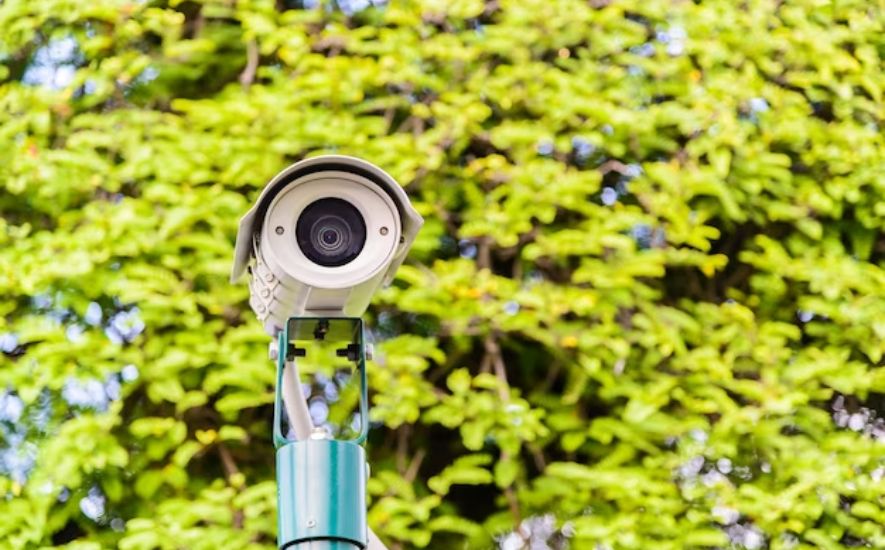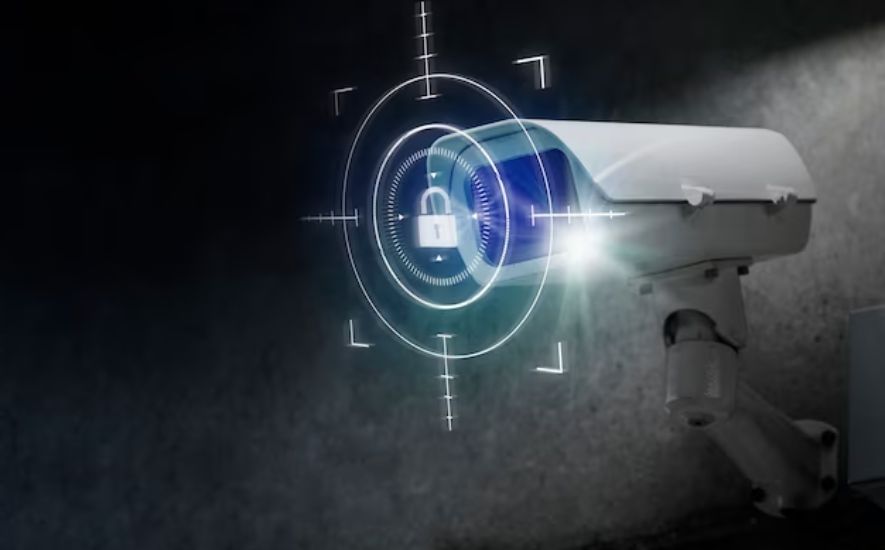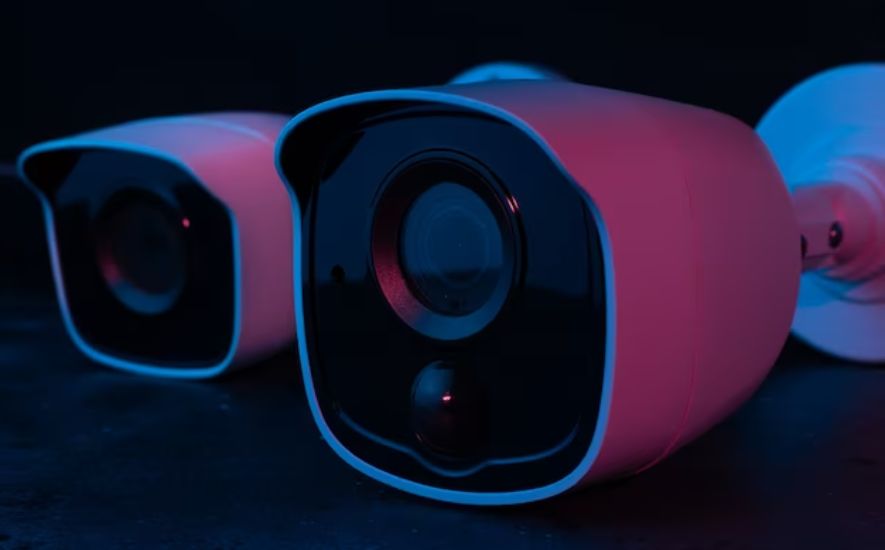What Cameras Have Night Vision
Night vision cameras are revolutionary tools that have transformed how we capture moments in low-light or dark settings. They enable us to see hidden wonders that traditional cameras can’t capture.
What cameras have night vision? Night vision cameras are specialized devices equipped with infrared sensors or image intensifiers that enable them to capture images and videos even in low-light or complete darkness. By utilizing infrared light or thermal imaging technology, these cameras can produce detailed visuals, providing a new level of insight into the otherwise hidden world of the night.
From security and wildlife observation to recreational activities like stargazing, these cutting-edge devices find diverse applications. With specialized features, night vision cameras have expanded our ability to perceive and document the beauty of the nocturnal world.
The Fascinating World of Night Vision Cameras

Night vision cameras have unlocked a mesmerizing realm of exploration and security. These advanced imaging devices have the remarkable ability to capture clear and detailed visuals even in low-light or complete darkness.
The technology behind night vision cameras is both impressive and intriguing, making them essential tools in various fields, such as surveillance, wildlife observation, and military operations.
Understanding Night Vision Technology
Night vision cameras operate based on the principles of light amplification and image enhancement. They use various techniques to convert ambient light or infrared radiation into visible images.
The two main types of night vision technologies are image intensification and thermal imaging. Image intensification cameras amplify low levels of visible light, while thermal imaging cameras detect and display the heat emitted by objects, regardless of lighting conditions.
Applications in Surveillance and Security
One of the primary uses of night vision cameras is in surveillance and security. Law enforcement agencies, military forces, and private security firms rely on these devices for monitoring activities in low-light environments or during nighttime operations.
Night vision cameras can be mounted on drones, ground-based units, or security systems, providing invaluable assistance in safeguarding critical infrastructures, detecting intruders, and conducting covert operations.
Wildlife Observation and Research
Night vision cameras play a crucial role in wildlife observation and research. Biologists and conservationists utilize these cameras to study nocturnal animals and their behavior without disturbing them.
By capturing high-quality images and videos in darkness, night vision cameras offer unprecedented insights into the hidden lives of animals, contributing to conservation efforts and promoting a deeper understanding of wildlife ecosystems.
Outdoor Recreation and Adventure
For outdoor enthusiasts and adventurers, night vision cameras have opened up new avenues of exploration. Whether it’s hiking, camping, or wildlife photography, these cameras enable individuals to capture stunning visuals of nature’s nocturnal beauty.
Additionally, night vision cameras enhance safety during outdoor activities by providing enhanced visibility in low-light conditions, preventing accidents, and enabling navigation through challenging terrains.
Night Vision in Consumer Electronics
In recent years, night vision technology has made its way into consumer electronics. Many smartphones and digital cameras now come equipped with night mode features, allowing users to capture decent images in dimly lit settings.
This integration of night vision capabilities into mainstream devices has made night photography more accessible and enjoyable for the general public.
Future Innovations and Advancements
As technology continues to evolve, night vision cameras are likely to see remarkable advancements.Improvements in sensor technology, image processing, and artificial intelligence will lead to even higher image quality, increased sensitivity, and more versatile applications.
The future may witness night vision cameras becoming a standard feature in various devices, further revolutionizing fields like automotive safety and autonomous navigation.
A Guide to Cameras with Night Vision

Cameras with night vision are an essential tool for capturing clear and detailed images and videos in low-light or complete darkness.Whether you’re a professional photographer, a security-conscious homeowner, or an outdoor enthusiast, night vision cameras offer enhanced visibility in challenging lighting conditions.
This comprehensive guide will introduce you to the world of night vision cameras and help you make an informed decision when choosing the right one for your needs.
Understanding Night Vision Technology
Night vision cameras utilize various technologies to achieve visibility in the dark. The most common ones are:
Infrared (IR) Illuminators: These cameras emit infrared light, which is invisible to the human eye but allows the camera to capture images in the dark.
Thermal Imaging: Cameras with thermal imaging detect heat signatures, providing visibility even without ambient light.
Types of Night Vision Cameras: There are different types of night vision cameras available in the market, each with its unique features and applications. Some popular types include:
Night Vision Security Cameras: Ideal for monitoring homes and businesses, these cameras offer clear images even in pitch-black conditions.
Trail Cameras: Designed for wildlife enthusiasts and hunters, these cameras capture nocturnal animal activity in the wilderness.
Night Vision Binoculars and Monoculars: Compact and portable, these devices are perfect for outdoor exploration and surveillance.
Thermal Cameras: Suited for detecting intruders or locating hotspots, thermal cameras provide heat-based imaging.
Key Factors to Consider: When choosing a night vision camera, several factors are essential to ensure optimal performance.
IR Range: Check the camera’s infrared range, as it determines how far the camera can see in the dark.
Resolution: Higher resolution means clearer images, so aim for a camera with good resolution capabilities.
Battery Life: For outdoor use, opt for cameras with long battery life to avoid frequent recharging.
Durability: If the camera will be exposed to harsh weather conditions or used in rugged environments, look for a durable, weather-resistant model.
Tips for Night Photography
Reduce Camera Shake: Use a tripod or stabilize the camera to avoid blurry images caused by camera shake in low light.
Adjust ISO and Shutter Speed: Experiment with ISO settings and slower shutter speeds to capture more light in dark scenes.
Avoid Using Flash: Using the camera’s flash can create harsh lighting and wash out details in night shots.
Use Remote Shutter Release: Prevent camera shake by using a remote shutter release or the camera’s self-timer for longer exposures
.
Night Vision Camera Applications
Home Security: Keep an eye on your property and loved ones, even in the darkest of nights.
Wildlife Observation: Capture elusive nocturnal creatures in their natural habitat without disturbing them.
Nighttime Sports and Events: Document nighttime events and sports activities with clarity and detail.
Search and Rescue: Aid rescue missions in low-light conditions or at night using thermal imaging technology.
How Night Vision Cameras Capture the Invisible

Night vision cameras have revolutionized the way we see and perceive our surroundings in low-light conditions. These sophisticated devices have the unique ability to capture the invisible, revealing hidden details that remain unseen by the naked eye.
Understanding Low-Light Conditions
Before delving into night vision cameras, it’s essential to understand low-light conditions. In the absence of sufficient ambient light, human vision struggles to perceive details, resulting in limited visibility.
Traditional cameras also face challenges in such conditions, producing dark and grainy images. Night vision cameras, however, surpass these limitations, enabling us to see clearly even in pitch-dark environments.
Principles of Night Vision Technology
The foundation of night vision cameras lies in two primary technologies: image enhancement and thermal imaging.
Image Enhancement
Image enhancement technology amplifies the available ambient light, enhancing the image for better visibility. This process involves three main steps:
Light Gathering
Night vision cameras use specialized lenses or sensors designed to collect whatever available light is present in the environment, including infrared (IR) light.
Image Conversion
The gathered light is then converted into electrons using a photocathode, a key component in image intensification. The photocathode releases electrons when exposed to photons from the collected light.
Electron Amplification
The released electrons pass through a microchannel plate (MCP) that multiplies their numbers through a process called electron cascading. This amplification results in a brighter image, making it visible to the human eye or an electronic sensor.
Thermal Imaging
Thermal imaging, another night vision technology, does not rely on visible light. Instead, it captures the heat emitted by objects and living beings. The process involves:
Infrared Radiation Detection
Thermal cameras utilize sensors sensitive to infrared radiation emitted by objects due to their temperature. Warmer objects emit more infrared radiation, while cooler objects emit less.
Image Rendering
The captured infrared radiation is converted into electrical signals and then processed through complex algorithms to generate a visual representation of the temperature differences in the scene. This results in a grayscale image, where warmer objects appear lighter and cooler objects appear darker.
Active Infrared (IR) Night Vision
Active IR cameras emit their own infrared light to illuminate the scene. The camera then captures the reflected IR light, making objects visible in complete darkness. They are commonly used in security surveillance and military applications.
Passive Infrared (IR) Night Vision
Passive IR cameras, also known as thermal cameras, rely on the heat emitted by objects rather than emitting their own IR light.
They excel in detecting living beings and objects with temperature differences, making them valuable in search-and-rescue missions and wildlife observation.
Digital Image Intensification Night Vision
Digital image intensification cameras use the image enhancement technology discussed earlier. They produce real-time, clear, and high-resolution images, making them popular in night photography, wildlife observation, and security monitoring.
Applications of Night Vision Cameras
Night vision cameras have found applications in a wide range of fields, contributing to increased safety and improved efficiency:
Military and Law Enforcement
Night vision technology enhances the capabilities of military personnel and law enforcement agencies, enabling them to conduct covert operations, surveillance, and rescue missions in low-light conditions.
Wildlife Observation
Researchers and wildlife enthusiasts use night vision cameras to observe and study nocturnal animals without disturbing their natural behavior.
Security and Surveillance
Night vision cameras play a crucial role in securing properties and public spaces, enabling round-the-clock surveillance and crime prevention.
Navigation and Automotive Safety
Night vision cameras enhance driver visibility during nighttime driving, helping prevent accidents and improving road safety.
Conclusion
The world of cameras with night vision capability offers a diverse range of options to cater to various needs and preferences.
From high-end DSLRs equipped with infrared technology to compact and budget-friendly surveillance cameras, there’s something for everyone seeking to capture clear and crisp images in low-light conditions.
As technology advances, we can expect even more innovative solutions in this domain. Whether it’s for professional photography, home security, or wildlife observation, night vision cameras provide a vital edge in capturing moments that would otherwise be lost in the darkness.
Embracing these advancements opens up a world of possibilities, ensuring that we never miss a shot, even in the most challenging lighting situations.
Frequently Asked Questions(What Cameras Have Night Vision)FAQs
What cameras are night vision?
These cameras use infrared (IR) technology to detect and capture the invisible infrared light emitted by objects in the environment.The IR light is then translated into visible images, allowing the camera to see clearly in the dark.
How do you know if a camera has night vision?
Additionally, manufacturers often mention the camera’s low-light performance or its ability to capture images in the dark. Night vision cameras typically have built-in infrared LEDs, which emit the necessary light for clear imaging in low-light conditions.
Do most security cameras have night vision?
Whether it’s a standalone security camera or part of a surveillance system, night vision allows the camera to provide continuous monitoring and protection even in poorly lit areas or during nighttime.
How far can a night vision camera see?
However, it’s important to note that the clarity of the images may decrease with greater distance. Some high-end night vision cameras may offer extended ranges, but it’s best to refer to the camera’s specifications for accurate details on its night vision capabilities.




